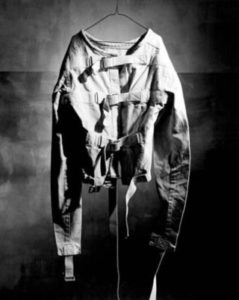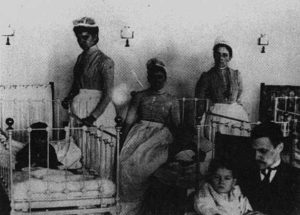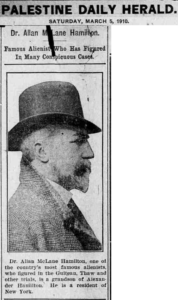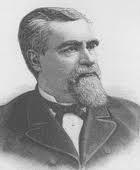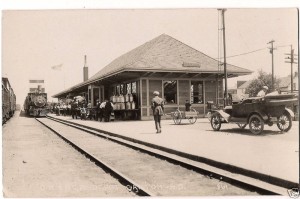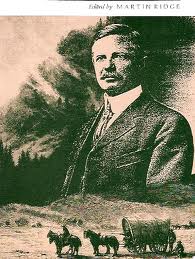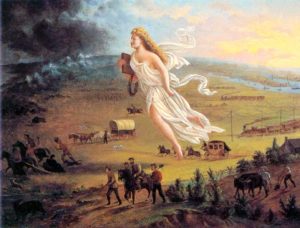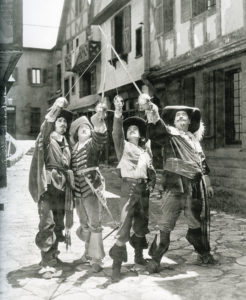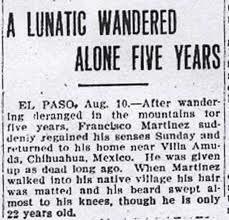Most accounts of assaults within insane asylum walls concern assaults on patients. However, asylum duty held dangers for staff, as well. On October 15, 1878, The New York Times published a vivid account of an assault on an attendant. Only three months on the job, Richard T. Harrison was beaten so badly by a patient at Ward’s Island Insane Asylum that he died within six hours of the attack. Continue reading
Category Archives: 1900s newspapers
Medical News
Medical ads in the early 1900s were imaginative, and sometimes a bit deceptive. Many were disguised as news articles that led readers to think they were getting a legitimate story, only to discover that a medical “cure” was at the heart of the piece. Continue reading
Turn of the Century Medical Advances
Though there was still little that doctors could do to cure insanity or even alleviate its symptoms, there were advances in the medical field. A vaccine for typhoid fever came out in 1896, and was followed by a vaccine for plague in 1897. Karl Landsteiner explored the issue of blood compatibility and created a system of blood typing in 1901. Continue reading
Understanding Insanity
Even though alienists (the term for early psychiatrists) treated insanity with vigor and resolution, they usually could not say with any certainty what had caused the condition.
An 1879 article, “Early Indications of Insanity,” in The American Journal of Insanity stated that in general, the cause of all insanity could be found in the neglect of, or an infraction of, the “established laws of physical or mental health.”
Since this could encompass almost anything, the writer went on to the core of his article, which was how to determine that someone was going insane. Continue reading
Prominent Voices
Though it would be impossible to name all the prominent citizens who supported the Canton Asylum for Insane Indians at at the turn of the century, a few stand out.
Among the town’s early professionals was Oscar Sherman Gifford. Settling in Lincoln County in 1871 after passing the bar, Gifford was a practicing attorney, district attorney, merchant, and surveyor before he established a law office with partner Mark Bailey in 1875. Continue reading
A Bustling Town
Canton played an early role in South Dakota’s history (see last post), and was full of people who wanted to see it grow. The town set up a school almost as soon as the citizens began building log homes (1868), and shortly thereafter established businesses like the Elkhorn Tavern, a general store and community building, and a post office. Continue reading
Frontier Philosophy
The ideas of westward expansion, coast-to-coast boundaries, and bountiful natural resources were entwined within the American consciousness (see last post). Historian Frederick Jackson Turner studied the impact that free land–a huge part of America’s westward expansion–and its consequent settlement had on America and Americans. Continue reading
American Philosophy
People today often find it hard to understand how Americans and their government could have treated native peoples so badly. Americans were not alone in thinking that their particular race/religion/country/form of government/, etc., was superior to the rest of the world’s, but they also operated under a mentality that gave them seemingly rational reasons for pushing native peoples out of their way. Continue reading
Movies at the Asylum
Though Dr. Harry Hummer often kept costs at the Canton Asylum for Insane Indians down to unreasonable levels, he was not entirely indifferent to the social and recreational needs of his patients.
On February 7, 1921, he sent a letter to the Commissioner of Indian Affairs, saying: “I have the honor to report that we have finally been successful in installing our moving picture outfit and gave the first entertainment yesterday, which afforded patients and employees quite a little pleasure. Continue reading
Newspapers (Don’t) Enlighten
For all their faults, insane asylum superintendents tried hard to ease the stigma of insanity. They wanted families to bring their loved ones for help, without shame or fear of criticism. Community newspapers often praised the work of the local asylum and its staff, but generally, newspapers and other media did little to help the superintendents in their quest to ease the embarrassment associated with insanity. Here are some typical quotes:
“Another account says that eighteen raving maniacs were burned to death in the insane department at the Blockley alms-house on the west side of the Schuylkill River . . .” from the Rochester, NY Democrat Chronicle, Feb. 13, 1885.
“To allay their fears, and to quiet the excitement which many of them began to exhibit . . . the lunatics were told that there was to be a dance in the Amusement Hall.” New York Times, 1879.
Obituary notice: “Brought to the Eastern Kentucky Lunatic Asylum in this city [Lexington] three days ago a raving maniac, Mrs. Jennie Centers, aged 23, died at that institution Thursday night of exhaustion from acute mania.” The Leader, January 12, 1907.
“Fredrick J. French, an electric light trimmer, received a shock and became a raving maniac this morning while at work on the top of the slender iron tower in front of the city hall building. ” p. 127, Western Electrician, Volume XIV, 1894.
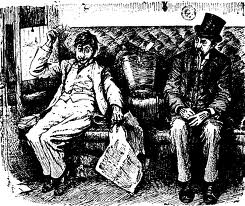
Illustration of Railroad Passenger Afraid He is Sitting Beside a Dangerous Lunatic, Mr. Punch's Railway Book, courtesy Project Gutenberg
______________________________________________________________________________________
